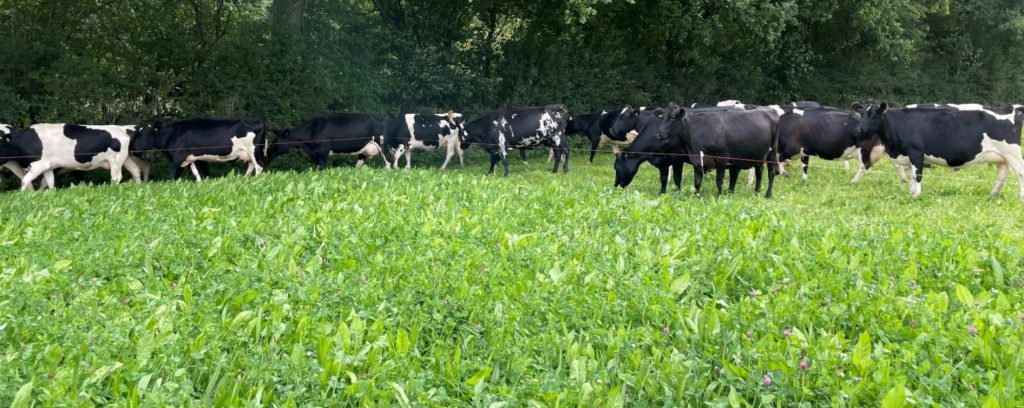
Reflections from Groundswell Dairy Session 2024
Written by Becky Willson

Dairy is often in the spotlight in terms of its environmental impact. Whether it be focussed on slurry management, methane emissions from animals, or soil loss and run off from maize crops, dairy is often an easy target. However, there are numerous farmers and projects who are showcasing that this doesn’t need to be the case, and there are positive steps that can be taken.
When approaching Groundswell this year, it was one of the things that we wanted to highlight. We are very lucky to work with some really forward-thinking organisations and farmers that we wanted to highlight at this national event. So we submitted our session “Can Milk be green?” to try and understand some key questions.
These were:
- How do we quantify the importance of regenerative dairy systems when the current metrics are solely focused on reducing emissions intensity/litre?
- How do we accurately represent the contribution that regenerative dairy systems are providing to carbon sequestration, biodiversity and resilient landscapes?
- How do we do this in a cost-effective way which provides reassurance to processors and consumers that milk can be green?
- How do we support farmers in that transition?
We had a fantastic panel of speakers which included farmers who were making changes and processors who were supporting both data collection, evidence building and industry communication.
Tom White from Yeo Valley introduced the session and highlighted the ability for grass-based dairy systems to deliver on a wide range of environmental benefits. The key areas of importance were around how we gather good data, collaborate and support our farmers to be able to deliver the changes on-farm. Tom focussed on the importance of diversity, including diversity in our pastures, rotations and management systems to deliver on a range of environmental impacts.
Andrew Brewer from Ennis Barton farm in Cornwall provided some insights into the trials that he has been involved with on his farm as part of the Farm Net Zero project. Trialling herbal leys and their impact on cow health and rumination, soil recovery after potatoes and cover crops have all provided useful tools to build soil heath and reduce emissions.
Will Mayor from Yeo Valley farms spoke about how by using their experiences with the beef animals they have adapted a system that works for their dairy cows. Implementing next-level grazing has allowed them to increase covers, remove the topper from the system and maintain milk quality and pasture utilisation, alongside soil health and carbon sequestration.
Lucy Noad from Woodhouse Farms shared her story in terms of her transition from a more conventional dairy farm over the last few years. Lucy spoke about the need to support farmers in the transition and also to ensure that the way we communicate engages farmers to understand the relevance of practical solutions for them.
Mark Brooking from First Milk concluded the session highlighting some of the ways that First Milk are supporting their farmers to make the transition to more regenerative practices. Farmers are supported through incentives to implement rotational grazing, species diversity and minimal cultivation in order to demonstrate an uplift in soil health, sequestration, biodiversity and water quality. Data is being collected on the impact of these changes to provide confidence in the potential for their members to deliver solutions.
It was an inspiring session which provided real life examples that show the positive steps that are taking place to provide data, collaborate and support farmers. Although our soil project with Yeo Valley is in the interim years before we retest soils, it was great to hear some of the practices taking place and the production and resilience benefits that the farmers are seeing now irrespective of soil carbon sequestration.
So can milk be green? The answer was a resounding yes!
To watch the full session please visit the Groundswell YouTube channel.




Recent Comments